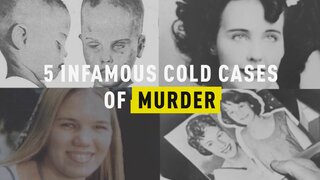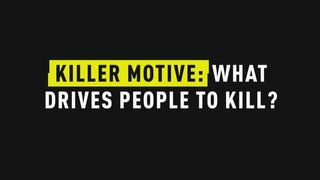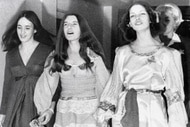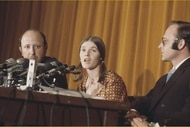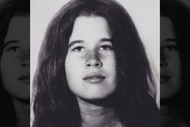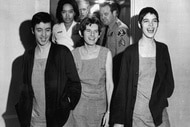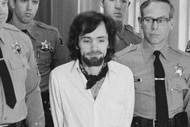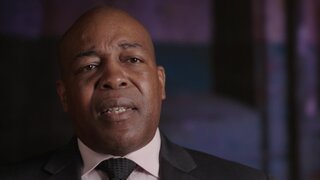Create a free profile to get unlimited access to exclusive videos, breaking news, sweepstakes, and more!
How Kitty Genovese's Murder Shaped New York's Perception of Violent Crime
Like other murder cases that have made headlines in New York City — some of which are covered in the second season of Oxygen's New York Homicide, premiering June 10 — the truth is far more complex than people realize.
In the early morning hours of March 13, 1964, Kitty Genovese was attacked by a random man just steps away from her home in the New York City borough of Queens. Her pleas for help were heard by a purported 38 people who, frozen in fear, did nothing to help, even when the assailant returned and attacked her a second time. The story goes that she lay on the street, wounded and bleeding, as people locked their doors and went back to bed.
In the months and years following the shocking murder, the story of the 38 witnesses was cemented into history. But, like other murder cases that have made headlines in New York City — some of which are covered in the second season of Oxygen's New York Homicide, premiering June 10 at 9/8c — the truth is far more complex than people realize.
In reality, numerous witnesses sought aid in the moments after they heard the 28-year-old's first scream. Phone calls were made to police and one woman, a friend of Genovese, held her in her arms as they awaited first responders. Genovese, stabbed multiple times, ultimately died en route to the hospital.
And while the facts of Genovese's murder have been set straight in recent years, the murder case is still largely cited in studies of the Bystander Effect, a term that was coined in the wake of her death.
To learn more about the facts of Genovese's murder and what exactly the Bystander Effect is, keep reading.
Who Is Kitty Genovese?
Born Catherine Susan Genovese in July 1935, she was the eldest of Rachel and Vincent Genovese's five children.
She was named the "Class Cut-Up," the equivalent of Class Clown, according to the 2015 documentary The Witness, which was produced and narrated by one of her brothers, William Genovese. In addition to being funny, people remembered her as being a radiant and smart woman.
"Kitty seemed to know about everything. I was a curious kid and asked a lot of questions; Kitty always took the time to answer them," William said in the documentary.
When her family moved to Connecticut in her teens, Genovese stayed behind in Brooklyn, later sharing an apartment with Mary Ann Zielonko in the Kew Gardens area of Queens, where she died. ''She was actually my partner,'' Ms. Zielonko later told the New York Times in 2004. ''We were lovers together. Everybody tried to hush that up.''
Zielonko said that Genovese "had a great smile."
William said in The Witness that he was unaware his sister was gay. He knew that she married a man named Rocco but their marriage was short-lived. "My relations with Kitty shall remain a mystery forever," Rocco wrote to William in an email shared in the documentary.
The regulars at the bar where she worked later told William that it was obvious she was gay, referring to her as "one of the boys" in the documentary.
What Happened to Kitty Genovese
Genovese had just finished her shift as a manager at Ev's Eleventh Hour bar and was headed home when she was spotted by a serial killer on the night of March 13, 1964, according to the New York Times' now-infamous report. As she exited her red Fiat and walked toward her apartment at around 3 a.m., a man approached and stabbed her in the back, at which point Genovese began screaming for help.
"Many of your sister's neighbors really heard everything that was going on; heard the screams, knew that an attack was taking place and knew that it was a violent attack," Queens assistant district attorney Charles Skoller told Genovese's brother in the 2015 documentary The Witness.
Skoller even said that a doorman, Joseph Fink, saw the attack but went to sleep shortly thereafter. "He knew exactly what was happening and instead of doing anything, he got on the elevator, went downstairs to his apartment and went to sleep," Skoller said.
The New York Times report, published two weeks after the slaying, stated that lights went on in the nearby apartments, scaring away the attacker — though there are conflicting reports about what really happened. The Witness highlighted written testimony from neighbor Robert Mozer, who reportedly opened his window and shouted, "Hey, get out of there!"
A second unnamed individual reportedly called the authorities, according to the New York Daily News. Police didn't show up though, and the assailant returned to rape Genovese before stealing $49 from her.
By that point, Genovese had staggered to a stairway behind her apartment building, where a second man saw the attack. Instead of calling the police, he reportedly called his girlfriend who cautioned him to not get involved, according to Skoller.
RELATED: Man Fatally Stabbed In Paris Metro As Onlookers Post On Social Media
Finally, according to the Daily News, neighbor Karl Ross got ahold of police, who arrived moments after the second attack.
In total, Skoller estimated that that attack spanned 30 minutes to an hour.
When NYT reporter Martin Gansberg spoke to some of the witnesses in 1964, they purportedly reacted with indifference. "I didn't want to get involved," one witness reportedly told Gansberg.
William Genovese confirmed through his own research in The Witness that police spoke with about 38 people about their account of that night. All of them stated that they heard Kitty's screams, though most of them were unsure what was happening.
Kitty Genovese's Cause of Death
Genovese died of her injuries en route to the hospital. She was 28 years old.
While many didn't jump to action, neighbor Sophia Farrar went to comfort Genovese after another neighbor called to say that Genovese was attacked nearby. She found the young woman's body slumped in the back hallway and held her, telling her that help was on its way.
"I only hope that she knew it was me, that she wasn't alone,'' Farrar said in The Witness.
How Was Winston Moseley Caught
Less than a week after Genovese's murder, Winston Moseley, a 29-year-old father of three, was arrested for an unrelated burglary. Ironically, two bystanders saw Moseley leave a house with a TV and reported him to police, according to Kitty Genovese: A True Account of a Public Murder and its Private Consequences.
While being questioned, he admitted to killing the barmaid, "murdering two other women, raping a third, attempting to rape yet another, and numerous burglaries," according to 1995 court records.
Moseley pleaded not guilty by reason of insanity in a trial that saw him detail Genovese's murder, as well as that of 15-year-old Barbara Kralik and 24-year-old Annie Mae Johnson — though prosecutors declined to press charges in those murders.
A jury of 11 men and one woman returned a guilty verdict following a three-day trial and recommended a death sentence for Moseley, who barely reacted as the courthouse erupted in cheers, the New York Daily News reported in 1964. Justice J. Irwin Shapiro said at the time, "Although I do not believe in capital punishment, when I see a monster like this I wouldn't hesitate to pull the switch on him myself."
Moseley's death sentence was later commuted to life in prison after an appeal.
He was incarcerated at the Clinton Correctional Facility in Dannemora, New York for the beginning of his sentence, though he briefly escaped for three days in 1968. During his three-day prison escape, he was accused of holding two women captive in a Buffalo home before going to Grand Island, where he held another three people — two women and an infant — captive before turning himself in to police.
While in prison he attained a college degree in sociology, which he said taught him the impact of his crimes. "I am not going to try to convince anyone I changed overnight," he said in a 1989 letter to Buffalo News. "I made myself do what many men in prison find difficult, if not impossible, and that is to seriously contemplate the societal fear they generated, the havoc they created in one or more communities, and the harm they did to their victims."
He continued, "It is never too late to try to make amends, so should the day come when I am released from prison, and I pray to God that day will come, I will do all in my power to atone for the sins of my past."
Moseley continued to advocate for himself whenever he was up for parole, writing to the parole board about the various reasons he was motivated to kill. In one instance, he wrote that "anger and grief" caused by a friend's death drove him to murder Genovese, according to USA Today.
The parole board repeatedly rejected Moseley's requests, writing in 2015, "You still minimize the gravity of your behavior and did not exhibit much insight," according to the Associated Press.
In 2016, Moseley died at the age of 81.
The Bystander Effect
Genovese's death prompted the theory of the Bystander Effect, which posits that the more people who witness a crime, the less likely they are to help the victim. Social psychologists Bibb Latané and John Darley suggested in their 1968 study "Bystander intervention in emergencies: Diffusion of responsibility" that bystanders believe other bystanders will act and that they also react based on the reactions of those around them.
This theory has become controversial in recent years, particularly after the New York Times acknowledged the initial report on Genovese's death had spread false information. In a 2004 article, the newspaper revisited the facts of the case and spoke with Harold Takooshian, a professor of urban psychology at Fordham University who has studied the case at length. Prof. Takooshian posited that the 38 witnesses were less likely to act because they didn't understand what was happening, not because they were apathetic.
"Where others might have seen them [the witnesses] as villains,'' Professor Takooshian said, ''psychologists see these people as normal.''

